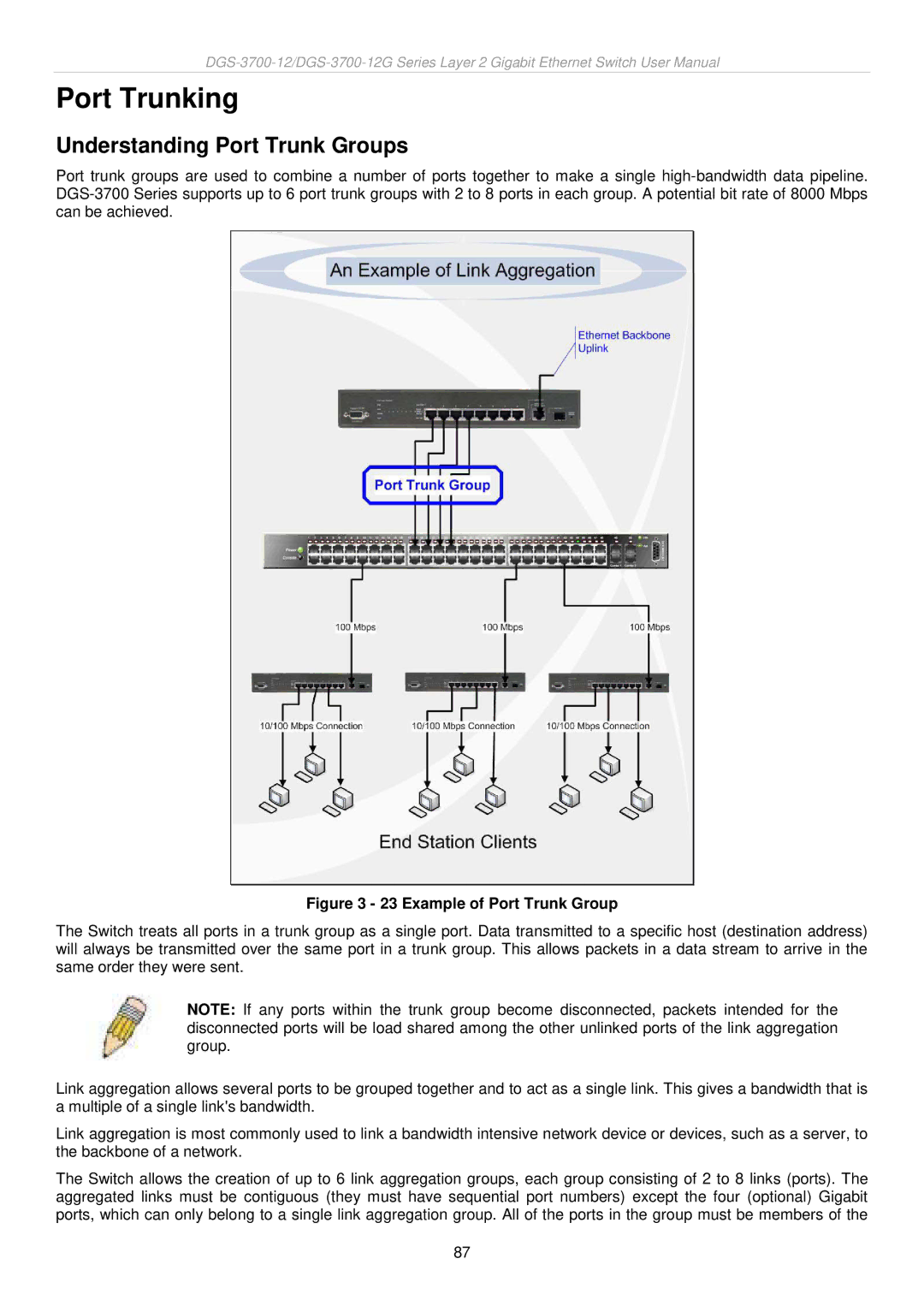
Port Trunking
Understanding Port Trunk Groups
Port trunk groups are used to combine a number of ports together to make a single
Figure 3 - 23 Example of Port Trunk Group
The Switch treats all ports in a trunk group as a single port. Data transmitted to a specific host (destination address) will always be transmitted over the same port in a trunk group. This allows packets in a data stream to arrive in the same order they were sent.
NOTE: If any ports within the trunk group become disconnected, packets intended for the disconnected ports will be load shared among the other unlinked ports of the link aggregation group.
Link aggregation allows several ports to be grouped together and to act as a single link. This gives a bandwidth that is a multiple of a single link's bandwidth.
Link aggregation is most commonly used to link a bandwidth intensive network device or devices, such as a server, to the backbone of a network.
The Switch allows the creation of up to 6 link aggregation groups, each group consisting of 2 to 8 links (ports). The aggregated links must be contiguous (they must have sequential port numbers) except the four (optional) Gigabit ports, which can only belong to a single link aggregation group. All of the ports in the group must be members of the
87
